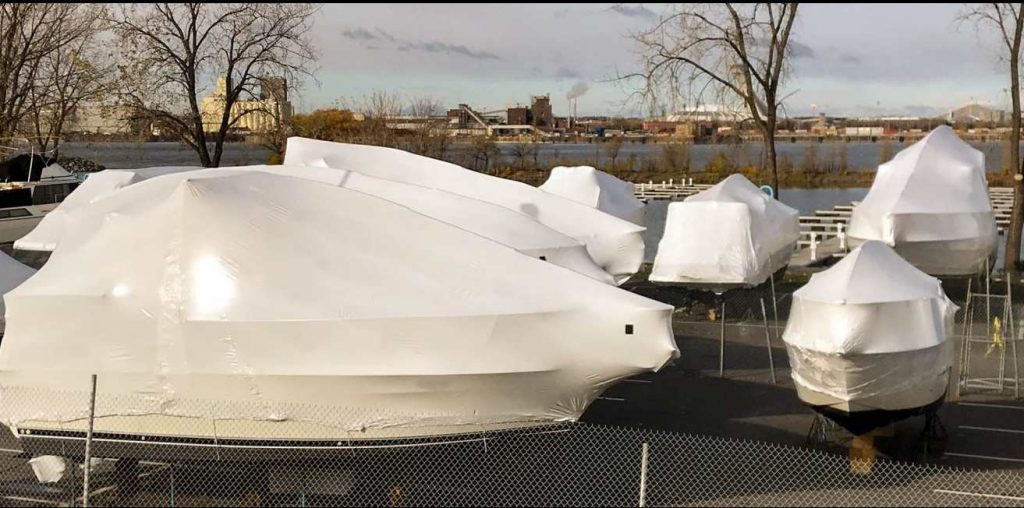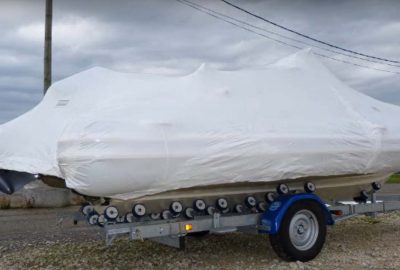Many boat owners opt for shrink-wrap packaging as a winter-storage solution. It has many advantages including protection against humidity, pests – rodents and insects – that make their nests there, dust and various detritus. Here’s how to create your boat cover for winterising.
How to shrink-wrap a sailboat for winter storage
The process of shrink wrapping a sailboat begins by creating a frame with straps, then using tape and strategic cuts to secure the plastic wrap to the frame. Finally, the process is completed by using a heat gun to weld the seams of the plastic and shrink the cover.
Shrink wrapping a sailboat involves several steps that have a precise order and must be done properly to ensure a tight seal. Remember that if you plan to work on the boat during the winter season, you need to ensure sufficient height. By rolling up the boat with the mast in place, you can decide how much deck height you will have. However, if you keep the mast down, you will not be able to access the deck of the sailboat.
The stages of shrink-wrapping a sailboat
1 – Prepare the interior and exterior of the sailboat. If your boat is currently in the water, it must be put in dry dock. Clean the interior of your boat and make sure there is no excessive moisture. Open the hatches and drain plug so that any water still in the boat can drain or air can escape before you wrap it.
2 – Start with the support straps that run from the mast or center of the boat and go up to the bow and the stern, then down around the boat. The more straps you place, the stronger your retractable cover will be.
3 – Use the waterline as a guide and attach the hull strap horizontally along the entire length of the boat. Tighten this strap so that it does not slip down.
4 – Measure the plastic film needed to cover your boat. Allow for an extra film margin on each side to form a seam.
5 – Once you have measured and cut the plastic, lay it on the deck and cut two slots in the film for the mast. Then use tape to attach the plastic to the mast and make it watertight. Do this with both halves of the plastic. Make cuts in the plastic for the guy lines and secure the plastic with more tape. Remember that a watertight seal is necessary to keep water out during winter storage. Switch to the hull strap. Secure the plastic with adhesive tape.
6 – Start welding the plastic with a heat gun. Lightly heat the area where the two sheets of film meet and weld them together. After welding the sheets, re-cover them with tape to ensure maximum durability.
7 – Finish the process by gently blowing heat all over the plastic cover, which will shrink it and create an airtight seal. Be careful not to overheat the plastic. You just need to heat it enough so that it forms a tight seal around your boat.
If you intend to work on your boat, you can install a zipped door. There are also specific small openings that fit into the plastic cover and create a draught to combat condensation during the wintering period.on pendant la durée de l’hivernage.








